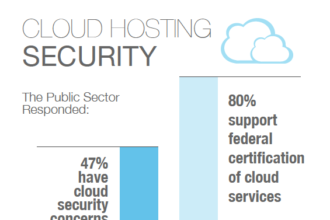Most people see their health care provider only during their annual check-ups. As important as these routine visits are, they are not sufficient for maintaining optimal health. At the same time, seeing a doctor more frequently can be expensive and time-consuming.
At-home healthcare services aim to close this gap by providing preventative care in a more convenient way. Anyone can make time to speak with a medical provider through the following services.
Therapy
Talking to a qualified therapist brings numerous benefits, including a better outlook on life, stronger relationships, and higher self-confidence. For people with mental health issues, seeing a therapist regularly is linked with more positive treatment outcomes.
Unfortunately, finding a therapist can be difficult. More than 50 percent of Americans live in areas where there aren’t enough mental health professionals to meet the demand.
The pool is even smaller for people who need specialized mental health care or want to work with a therapist from the LGBTQ or BIPOC communities. Stigma can also keep people away from mental health clinics.
Digitized therapy apps make it easier to find therapists and follow through on appointments. Apps like Better Help or Talkspace link users to a directory with thousands of practicing therapists and counselors. Appointments can be scheduled right on the app.
Since practitioners are located in different time zones, appointments are available at all times. Users can choose between phone calls, texts, or video calls as their preferred way to communicate. These options can help reduce stigma and make people more comfortable interacting with a therapist.
COVID-19 Test
Since the pandemic started in 2020, anyone who comes down with cold-like symptoms has had to take a test to rule out COVID-19. As the pandemic winds down, many cities are closing their public testing centers.
However, the virus is still spreading, and knowing one’s COVID status remains essential for traveling and visiting vulnerable loved ones. The CDC recommends self-testing kits for anyone experiencing COVID-19 symptoms. At-home tests are also suitable for people who have been exposed to someone with a confirmed case.
Public health clinics distribute COVID testing kits for free. Americans also order up to 8 no-cost antigen tests from the Federal government.
These tests work very similarly to the publicly available antigen test. Tests require only a nose swab or samples from both the nose and the throat. The swab is then placed into a tube with liquid. This liquid is transferred onto the test strip. Results take up to 30 minutes, and no laboratory processing is necessary.
Prescription Refills
Running out of medication is a serious problem for people with chronic illnesses. In many cases, even missing one dose can cause severe side effects. Switching to an online pharmacy makes refilling prescriptions easier and more predictable.
Some of the largest retailers, including Walgreens, RiteAid, and Amazon will fill and deliver prescription drugs. Most of these sellers accept the same insurance plans as in-person pharmacies.
These virtual pharmacies also offer consultations and options for a 90 or 180 day supply of some drugs. Customers can enroll in rapid refill plans that automatically fill and ship out a new prescription a few days before the prior one runs out.
Allergy Tests
Allergies and food intolerances can be difficult to diagnose without testing. At-home testing kits use blood samples to test for a range of food and environmental allergies. These tests measure antibody production when exposed to dozens of known allergens.
Allergy tests range in their cost and accuracy. Cheaper tests require smaller blood samples that can be obtained at home. For more complete tests, patients will need to find a Quest Diagnostics laboratory and schedule a blood draw. Either way, the results are delivered directly to the patient’s email or home address.
Dermatology Treatment
The average wait for a dermatology appointment is more than a month long. Apps like FirstDerm can connect users to a credentialed dermatologist in under two days. These apps are also an affordable alternative, as many insurance companies will not cover dermatology appointments unless they are medically necessary.
While virtual visits cannot lead to diagnostics or prescriptions, users can get professional advice for how to treat their condition or information to pass on to their primary care doctor or dermatologist. Virtual dermatology visits are also ideal for obtaining personalized advice on skincare and makeup routines.
Mole tracking apps enable users to record any worrisome spots that seem malignant. These apps are a perfect compliment for at-home skin exams. Some apps can even identify moles that need further investigation from a doctor.






